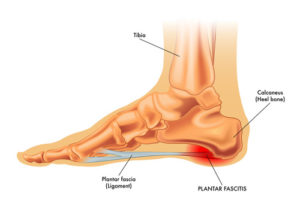 Ever think about the work your feet do every day? Those two appendages at the bottom of your leg not only support a body which is, by comparison, massive in size but are also responsible for propelling us about 2,000 miles per year – almost the distance from coast to coast.
Ever think about the work your feet do every day? Those two appendages at the bottom of your leg not only support a body which is, by comparison, massive in size but are also responsible for propelling us about 2,000 miles per year – almost the distance from coast to coast.
Your feet are the foundation, literally the base, on which you are built — but most of us treat our feet as though we could unzip and detach them at the end of the day. We generally abuse our feet until we are injured or in pain and only then do we pay attention.
Sadly, the prevalence of foot and ankle problems has skyrocketed over the past three decades. Millions of Americans suffer from foot and ankle injuries every year, and many people are experiencing these disorders at a much younger age than a generation ago. I’m sure many of you reading this are part of those statistics.
One of the most common foot issues people suffer from is plantar fasciitis. This condition arises when undue stress is placed on the ligament in your foot that supports your arch—the “plantar fascia”. When that ligament is overworked it leads to the classic symptoms of heel and arch pain which worsens when you get up to walk after periods of rest.
This isn’t the kind of pain you experience after being on your feet all day at work or walking around the amusement park with your kids. The pain from plantar fasciitis is often intense and debilitating and also surprisingly common. Two million Americans suffer from plantar fasciitis every year and 10 percent of the population will experience it in their lifetime.
There are a number of reasons the plantar fascia can become painful and inflamed. Common problems that contribute to the condition are:
- Structural deformities
- Repetitive stress injury
- Muscular dysfunction
- Positional deformities
- Improper or excessive exercise
You need to identify and address which of these issues is leading to problems with your plantar fascia. The treatment will depend on exactly what you are doing to injure your foot. For example, if you are exercising improperly you can learn better technique. Additional common interventions include:
- Stretching and Therapeutic exercises
- Orthotics
- Yoga or Physical therapy
Remember, your feet may be way down there at the end of your legs, but they are no less a part of you than your brain or heart or lungs. Take care of them and they will take you where you wish to go for many years.
